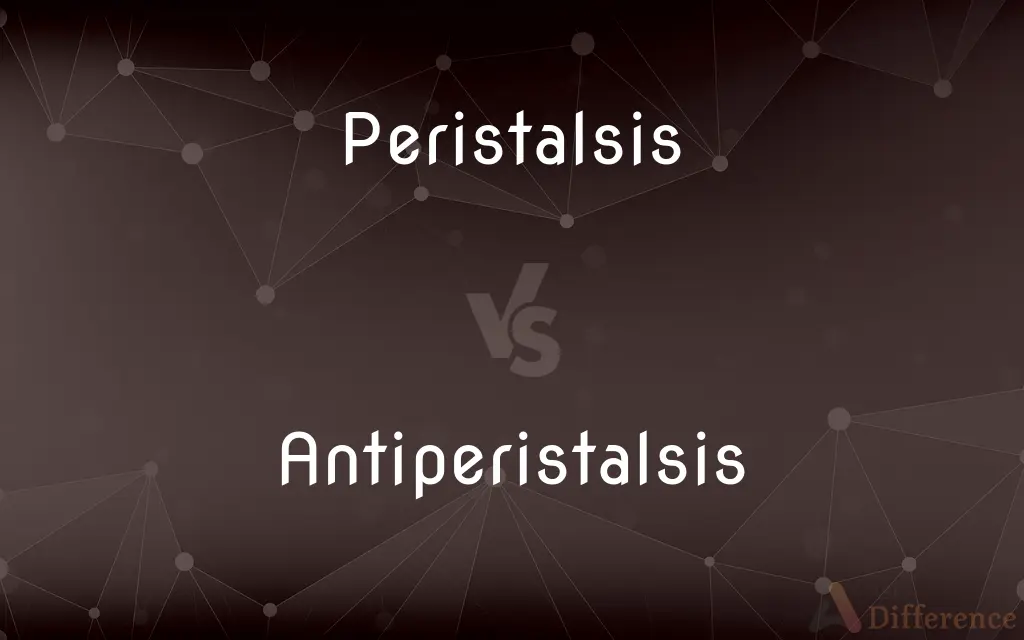Peristalsis vs. Antiperistalsis — What's the Difference?

Difference Between Peristalsis and Antiperistalsis
ADVERTISEMENT
Compare with Definitions
Peristalsis
Peristalsis is a radially symmetrical contraction and relaxation (which is expansion) of muscles that propagates in a wave down a tube, in an anterograde direction. Peristalsis is progression of coordinated contraction of involuntary circular muscles, which is preceded by a simultaneous contraction of the longitudinal muscle and relaxation of the circular muscle in the lining of the gut.In much of a digestive tract such as the human gastrointestinal tract, smooth muscle tissue contracts in sequence to produce a peristaltic wave, which propels a ball of food (called a bolus before being transformed into chyme in the stomach) along the tract.
Antiperistalsis
(physiology) reversed peristalsis
Peristalsis
The wavelike muscular contractions of the digestive tract or other tubular structures by which contents are forced onward toward the opening.
Antiperistalsis
(physiology) peristalsis occurring in the opposite direction of the way it typically occurs
Peristalsis
(medicine) The rhythmic, wave-like contraction and relaxation of muscles so as to propagate motion, as of food in the digestive tract.
ADVERTISEMENT
Peristalsis
Peristaltic contraction or action.
Peristalsis
The process of wave-like muscle contractions of the alimentary tract that moves food along
Share Your Discovery

Previous Comparison
Depository vs. Custodian
Next Comparison
Peeps vs. People













































